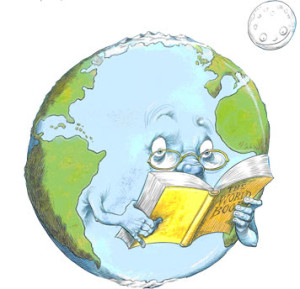The Age of Information and Hyperconnectivity (Part 4)
By Asher Crispe: November 26, 2014: Category Inspirations, Networks of Meaning
 What is one to do in the absence of the earth, when all semblance of naturally occurring solid foundations are removed? For Peter Sloterdijk (Globes: Spheres II p.249 “Postmodernity abandoned the dream of landing after the flood; the flood is the land.” Would this not be equivalent to saying the the unreal or virtual has become the new real? Do information flows dominate our landscapes swallowing everything and replacing a world of objects with what we know about them? Is this a pandemic media conundrum? We no longer perceive the world except through a torrent of media streams. Could this evidence the destruction of the primal intuitions about the world which are now buried amidst artificial frames and lenses?
What is one to do in the absence of the earth, when all semblance of naturally occurring solid foundations are removed? For Peter Sloterdijk (Globes: Spheres II p.249 “Postmodernity abandoned the dream of landing after the flood; the flood is the land.” Would this not be equivalent to saying the the unreal or virtual has become the new real? Do information flows dominate our landscapes swallowing everything and replacing a world of objects with what we know about them? Is this a pandemic media conundrum? We no longer perceive the world except through a torrent of media streams. Could this evidence the destruction of the primal intuitions about the world which are now buried amidst artificial frames and lenses?
When one stands back and looks at the deluge of big data, one cannot help but marvel at the lack of central agency that organizes it all. If anything, most of it seems to self-organize. If we have no tools with which to process it, the possibility of total chaos would loom large on the horizon but somehow the system automatically calms its own informational waters. By design, the word-ark seems doomed to sink. As the Torah describes it, this ‘boat which is not a boat’ has none of the classic features that would insure buoyancy. Boats are v-shaped in back-front profile. This displaces the water as the sides taper in from the midsection down to the bottom. Not so with the word-ark. It was a box. The Mittler Rebbe (1773-1827) as he is popularly known, in his extended treatment of the word-ark in the work Torat Chaim Bereshit (p.122), reveals that its lack of seaworthiness does not stop there either–for it contained neither sails nor rudder. Stranger still, he points out that the word-ark has no captain nor sailers for there is never any indication that Noach/Noah and this family performed any of those tasks. And while the word-ark has no control mechanisms, he likewise clarifies that it encountered no wind or waves (which easily would have overturned it). Contrary to the popular conception of a tempest, the flood waters merely carried it aloft while it ‘navigated’ automatically on the prevailing currents.
Language development (particularly in the information age) also follows this pattern. The meaning of words often comes across as self-assembling, finding their way in a manner that is largely out of our control. Consequently, our word-ark required no exterior nor interior intentional force to guide it. It went by itself. At least it cannot be said to have been subsumed under the long hand of intentionality. Perhaps the only stabilizing factor was Noach/Noah himself who, given that his name means ‘rest,’ managed to convey that quality to his extended environment. Uniting Noach/Noah with the word-ark produces a linguistic stabilizer effect. Terra firma becomes relocated to the interior dimension of language.
In this discourse from Torat Chaim of the Mittler Rebbe, Noach/Noah is designated as a personification of yesod abba or the foundation of the father. Here, ‘father’ refers to the production of seminal insights (chochmah) which correspond to the power of invention and intuition. However, we are not merely dealing with these inventive insights in and of themselves as they would be internally perceived but rather their ‘foundation’ or the capacity to manifest and express themselves either to others or to other dimensions within the soul. The constellation of meaning generated by the ‘father’ figure in Kabbalah constitutes a source experience or an original presence of the subject to the outside (either what lies outside of consciousness–i.e. in the unconscious–or else is outside the subject in the world). It designates the transcendental wellspring of experience or life as it is lived in a relatively unmediated way.
When Noach/Noah, a stable insight, enters into the word-ark, it is for the purpose of preserving that insight and containing it within a framework that further explicates it. In the Mittler Rebbe’s treatment, he explains the word-ark as the foundation of mother (yesod emma). In this case, the ‘mother’ figure denotes the ‘womb’ or ‘matrix’ of understanding that is first fertilized by a seminal insight and then conceives. Conceptualization of an idea entails its gradual unpacking and development through the power of explanation. All together, this set up involves taking a pure experiential seed (the first foundation) and allowing it to reside within a language constructed of its own making (a second foundation). By situating our experience within language we can create a ‘convention’ (a meeting or covenant between the father and mother figures, a marriage). Consecrating this integral relationship (whenever we fully place ourselves into words) spreads the quality of rest (Noach/Noah) in the sense of equanimity through the surrounding waters and insures their hydrostatic behavior. This is to say that when we establish and sustain conventions of language, we are able to float successfully on the plethora of information that now saturates our world.
Calling upon Sloterdijk’s reflections on the word-ark once more, he relates how (p.238):
“The realization that the outer floor can be withdrawn, and must be replaced with a floating inner world’s own floor, has been expressed in manifold mythological forms across the human race. Clearly the idea of de-founding and the repetition of the ground in the endo-foundation is as old as the flood, which probably constitutes the most important shared memory trace in world cultures.”
Maybe this smells of pulling oneself up by one’s bootstraps–too much like a self-referential grounding, a self-supported foundation built by those who stand upon it, but then again, many voices in the history of philosophy have reached this same attitude. These “self-contextualizing boxes” as Sloterdijk calls them, are illustrative of: “the manifold subcultures of modern social systems–whether organizations or private contexts–[which] form colorful fleets of arks on every scale that navigate self-referentially in a flood of environmental complexity that will never sink again” (p.249). To hear this echoed in translation we may turn to synoptic statements like that of Floyd Merrell in his work Signs Becoming Signs: Our Perfusive, Pervasive Universe (p.94 from the chapter entitled: Back on Terra Firma, or what is ‘real.’):
“Lévi-Strauss’s myths that speak themselves through ‘man,’ Heidegger’s language bringing about its self-realization through us, Derrida’s ‘we are always already in the text,’ Wittgenstein’s ‘the limits of language mean the limits of my world,’ and Pierce’s ‘I am the sum total of my thought-signs,’ all testify in one form or another to the non-linear, asymmetrical, irreversible, multiply in-formed “semiotics ≈ life”….”
Deliquescence has always been a permanent possibility. Fact checking the Genesis narrative about the speech-acts that install the key elements within nature, we find a conspicuous absence of any mention of water having been created. The original waters were presumably already there prior to the world. Since these waters are taken to be emblematic of knowledge and information, the implication is similar to John Wheeler’s notion of IT from Bit. Physical things come from information. What we do get are references to the “spirit of God hovering over the face of the waters” (Genesis 1:2) and then later, “and God said, ‘Let there be a firmament in the midst of the waters, and let it divide the waters from the waters’” (Genesis 1:6). The first reference which uses the words “spirit of God” (ruach Elokim) can be broken down as follows: ruach or “spirit” also pertains to ‘direction’ while Elokim, “God,” denotes God manifest as or through nature. Their combined meaning evokes a sense of the inner intention of nature as a vehicle for Divine self-expression. As for the rest of the expression, “on the face [penai] of the waters” can also be rendered as “inner aspect” [penimiut] of the waters (knowledge and information). This supports the idea that all of this information is inwardly at the service of a Divine purpose. The second expression (without really delving into it) pertains to information processing wherein different kinds of information are separated out and seen as distinct.
If the world crawls out of these waters (not the Darwinian ocean but rather the informational one) it would be consistent with the kabbalistic notion of God looking into the Torah in order to create the world–thus positioning the Torah as the ultimate programing language (true to the etymological construction which defines pro-gram as ‘written before’). In light of this, it could be said that we ourselves–and the world we live in–are the hardware running the software narrative of the Torah. It is realized through us. We are always already in the text of the Torah even if we are not conscious of this as such. It continuously constitutes the horizons of our world. The change between being commanded to construct a word-ark and then enter into it as opposed to our pre-diluvian life that we knew before, is primarily one for our consciousness. We have the freedom to move back and forth from world to word and then back to the world again. So too, we can connect the real with the unreal or virtual, make them trade places, or, even convert one into the other.
 This chapter on the nature of nature ends up revising nature’s role. As Sloterdijk (p.242) puts it “this covenant idea indicates that even nature, ostensibly given in pre-linguistic self-evidence, is now only given as a promise, not like an autonomous pre-world or an autonomous matrix of life processes.” We inherit a world with conditions–or should we say a conditional world? Far from surrendering to the ontological infirmities of a metaphorical water world, we are compelled to harness and challenge nature: “The reference to the flood acts as a cipher for the fact that it is not nature which makes provision for humans in all things; rather, humans are condemned to care for themselves with God’s help” (Sloterdijk p.240).
This chapter on the nature of nature ends up revising nature’s role. As Sloterdijk (p.242) puts it “this covenant idea indicates that even nature, ostensibly given in pre-linguistic self-evidence, is now only given as a promise, not like an autonomous pre-world or an autonomous matrix of life processes.” We inherit a world with conditions–or should we say a conditional world? Far from surrendering to the ontological infirmities of a metaphorical water world, we are compelled to harness and challenge nature: “The reference to the flood acts as a cipher for the fact that it is not nature which makes provision for humans in all things; rather, humans are condemned to care for themselves with God’s help” (Sloterdijk p.240).
Next, we will examine the multi-tiered architectural design of the word-ark in Part Five.
http://www.interinclusion.org/inspirations/the-age-of-information-and-hyperconnectivity-part-5/
http://www.interinclusion.org/inspirations/the-age-of-information-and-hyperconnectivity-part-3/
The Age of Information and Hyperconnectivity (Part 4) ,
















;)
;)
;)
;)
;)
;)
;)
;)
;)
;)
